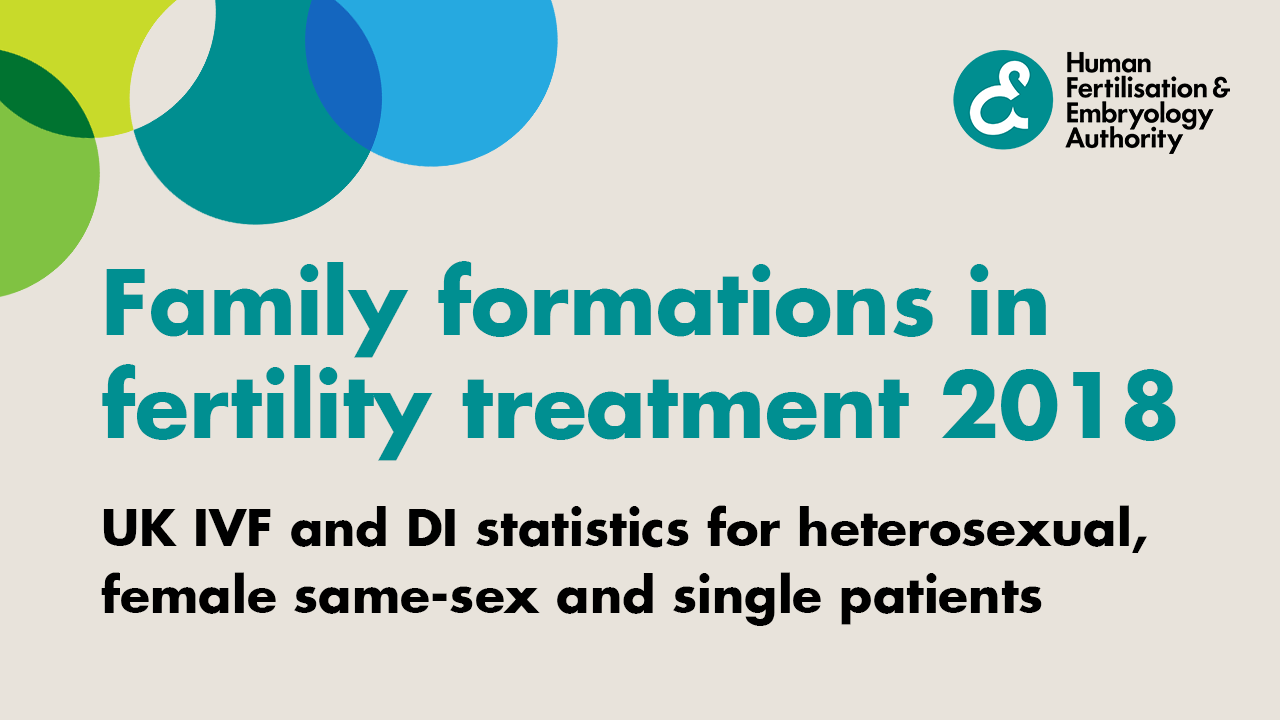
You have chosen not to allow videos from the 3rd party streaming service (YouTube), if you would like to see these videos, please change your Privacy policy and cookie settings.
How and why does fertility treatment vary for families?
By Amanda Evans, HFEA Research Manager
Most fertility cycles we record are for patients in heterosexual relationships (90%), though the largest increases year-on-year are by patients in female same-sex couples, single patients and surrogates. As the majority of treatments are undertaken by patients in heterosexual relationships, our summary statistics mainly reflect the experiences of these families. However, fertility services are often used and accessed quite differently depending on family make-up. This is why we recently published a report to specifically look at fertility treatment by family type and to reflect a broader range of experience: Family formations in fertility treatment 2018 (published September 2020).

The most important difference to consider across family types is the reason why they are seeking fertility treatment in the first place.
Patients in heterosexual relationships are likely seeking treatment due to male and/or female factor infertility after a period of trying to conceive. For this reason, most heterosexual couples use in vitro fertilisation (IVF) for fertility treatment (97%).
In contrast, patients in female same-sex relationships and single patients are likely using fertility services to access donor sperm in initial steps to create a genetically-linked family and they may not have infertility. Due to these reasons, single patients and patients in female same-sex partnerships have predominantly used donor insemination (DI) for their treatment. Interestingly though, we recorded a shift in use from DI to IVF for both of these patient groups over the last decade. The reason for this shift to IVF is not certain, though it may relate to the higher birth rates of IVF compared to DI and the added cost of undergoing multiple rounds of DI to have a baby.
In this report, we were sadly unable to comment in-depth on surrogacy cycles (data on cycles, pregnancies and live births are available in supplementary tables). One of the reasons for this is due to the low number of surrogacy cycles we record (about 300 cycles each year). Low numbers cause considerable variation year-on-year, making it hard to draw any meaningful conclusions or insight. In addition, we do not collect any information yet on the intended parents, though our system is being updated to collect this and we hope to report on this data in the future.
In the report, we highlighted the difference in IVF birth rates for family types. Single patients tended to have lower birth rates, which can be explained by their higher average age (39). Patients in heterosexual and female same-sex couples had the same average age (35), but female couples had much higher birth rates per embryo transferred (31%), compared to their heterosexual counterparts (22%). Quality of donor sperm compared to partner sperm may play some role in this difference, but another possible factor is patients in same-sex relationships using IVF earlier in treatment without any known infertility.
We also look at NHS funding level differences for families in the publication. We recorded the highest levels of NHS funding across the UK for patients in heterosexual relationships for both IVF and DI. There were larger variations in IVF funding across family types, with almost 40% of heterosexual cycles being funded, compared to 14% and 6% for patients in female couples and single patients respectively. These UK averages do, however, mask considerable differences among UK nations and English regions. Scotland had among the highest NHS funding levels for all family types, whereas England was among the lowest (varying considerably by region).
I hope this report provides valuable information on how fertility treatment varies for families and adds to the growing dialogue around equality in the fertility sector as a whole.
About the author: Amanda joined the HFEA as a Research Manager almost two years ago, leading on statistical publications and working with fertility researchers to access relevant data from the HFEA register. In previous work, Amanda has researched early embryo development using zebrafish as a model system and studied evolutionary changes in the immune system.
Where next?

Publication date: 15 April 2025
Review date: 15 April 2027


